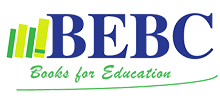Title: A Concise Grammar for English Language Teachers
Publisher: TP Publications
Author: Tony Penston
Reviewer: Liet Hellwig, TESOL Dept, Vancouver Community College, Canada
Overall rating: 
It is not exactly a secret that many English language teachers who speak the language as their mother tongue have a shaky foundation in grammar when they are still in training or at the beginning of their careers. They often feel apprehensive when they need to explain the English system to ELLs in need of grammatical tools to improve their skills. Unfortunately, however, teacher training courses usually do not have a lot of time to spend on grammar instruction in an already full syllabus on methodology, and restrict themselves to a minimum of grammar instruction - 'how to teach grammar' has a higher priority. The beginner teacher is stuck with shelves of grammar books written for the learner, or alternatively grammar references which require a lot of university linguistics.
A Concise Grammar for English Language Teachers is different in that it helps both new practitioners and student teachers to acquire the main principles of English grammar in a practical manner, without the reader getting bogged down in complex linguistic analyses. The book deals with all the important areas of grammar that an ESL/EFL teacher needs to plan for. The layout of the various explanations, with some helpful word formatting, adds to the accessibility of the content.
Not surprisingly, the book starts off with the English tense system, which often constitutes a labyrinth to L1 English speakers who have never wondered why and when they use a particular verb form. The grammar construction is not only dealt with in terms of its 'form' - the focus of so many grammar books for learners - but especially in terms of its 'meaning', or 'use' as it is called in the book. My favourite exercise is the review of all the verb tenses, with - for each of them -one matching example sentence and a short description of 'use'. In the last few years scores of my student teachers have engaged in this matching task. Although they always found it difficult to do, they invariably had a much better understanding of the English verb system afterwards.
A useful reference is the chart with "Level Guidelines" in the appendix. In a pre-service, teacher-training course, the ever-recurring question from the participants is what the ELL knows and can do at each level, and what therefore needs to be planned and taught next. Another necessity for native-speaker English teachers is to know the irregular verbs; they know what verb forms they would use in normal conversation but are hardly aware of the irregularity. The list in the book is a welcome reference. However, I would have preferred the verbs not to be in alphabetical order, but grouped according to their distinct patterns. For instance, 'cut', 'hit', 'put' and 'set' would be placed together, and they are then much easier to teach.
Some other stumbling blocks for my student teachers have been adverbs and pronouns. Usually, they can cope with the parts of speech ‘verb’ and ‘noun’, but the distinction between adjectives, prepositions, adverbs and conjunctions is challenging, not to mention the various types of pronouns. The respective chapters clarify concisely the different categories of adverbs and pronouns that the aspiring teacher needs to understand.
This grammar book helps English language teachers who have feared grammar to fill the gaps in their knowledge and understanding, and therefore become more confident and more professional in class.
In summary:
|
Criterion |
Grade: 5/4/3/2/1 |
Comments (5 being the highest grade and 1 the lowest) |
|
Originality |
5 |
This is the kind of grammar book that fills a long-existing gap in the market |
|
Practicality |
4 |
The combination of explanations and exercises is helpful to trainee teachers or new practitioners |
|
Presentation |
4 |
It is easy to use |
|
Overall rating |
4 |
|
What outstanding strengths/ weaknesses do you feel this title possesses? It explains grammar in a way that is accessible to trainee teachers or new teachers who can use the English grammar without any problem but who have limited knowledge ABOUT the grammar. It is therefore very helpful to native-speaker teachers with limited linguistic backgrounds. |
|
On which courses do you envisage being able to use this material? This is especially useful on teacher-training courses with native-speaker students. |
© Copyright BEBC REVIEW PANEL 2015 – this review may be reproduced but only with this acknowledgement
